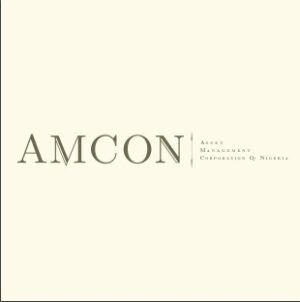Globally, infrastructure finance is an investment opportunity that pension fund managers with foresight hardly ignore. With N11.56 trillion assets in their coffers, Nigeria pension fund managers have great opportunity to invest in infrastructure for business and economic growth.
Identifying sustainable investment and business opportunities has for decades remained herculean task for fund managers.
It takes a good fund manager to match the huge funds stacked in their vaults with investment opportunities spread across several sectors of the economy.
From infrastructure funding, investment in education, manufacturing and even agriculture, there is always promising things to do with investors funds.
But one that constantly stands out with huge opportunities for long-term returns is investment in infrastructure.
Even Vice President, Prof. Yemi Osinbajo has spoken of the huge investment opportunity in infrastructure.
He had declared that Nigeria would requires about $3 trillion to fund its infrastructure need in the next 30.
Osinbajo spoke at a webinar that was organised by the Bureau for Public Enterprises (BPE) on improving the Nigerian infrastructure stock through Public-Private Partnership.
He said: “Nigeria needs up to $3 trillion over the next 30 years to bridge the infrastructure gap. The federal government would have to spend the entire revised 2020 appropriation of N10.81 trillion continuously for the next 108 years or more on capital expenditure to meet that target.
For him, the traditional method of building infrastructure through budgetary allocations is inadequate and set to become harder because of increasingly limited fiscal space.
One of the strong advocates for using pension funds for infrastructure financing is Managing Director and Chief Executive Officer of the Nigeria Sovereign Investment Organisation (NSIA), Uche Orji.
The NSIA boss had clarified that infrastructure finance is an investment opportunity for pension fund managers to take part in.
Orji, in a recent television interview, said all over the world, pension fund invest in infrastructure because such projects have long period of operation and is structured to provide a stable source of cash flow. It is something that should be interesting to pension fund managers.
“So it is about looking at viable projects and structuring them in a manner that makes it investible for the pension fund managers to look at them and decide if they are to invest in them or not.
“It is not abnormal but it is how it works all over the world. And the pension fund managers have said that they could invest 20 per cent of their funds, which means that there are investible projects for them.
“But don’t forget that the pension fund does not belong to the government but to its contributors. It is peoples’ fund which their fund managers will take the decision to invest in it because their investment instruments includes infrastructure, fiscal instruments and equities etc.”
Orji is not alone in believing that pension funds should be taken to finance infrastructure development in the country.
He said that 2020 is ending well in terms of NSIA performance despite the COVID-19 pandemic. Orji said that on the domestic front, the COVID-19 adversely affected projects leading to delays in construction, commissioning and logistics. The Second Niger Bridge, Abuja-Kano roads and Lagos Ibadan expressway were all affected by the lockdown and restrictions on movements.
He said: “We have come to realize that infrastructure deficits needs to be addressed. We need to turn infrastructure into investible assets. The Lagos-Ibadan Express Way is a phenomenal asset that has revenue potential. Tolling, to concession rights, right of way monetization, media rights are opportunities to be explored by investors. But there is need to build the road properly, operate it properly and get people to pay for it. Same for Kano Abuja road,” he said.
Obi said pension funds are to invest in such projects, NSIA will also invest, and individuals will invest.
“For rail, we are not going to make money by charging fares, but by moving cargoes. We also have to turn the rail right of way into an economic corridor. These are things that will be structured and made investible, bonds will be issued around these projects and people will invest when the times are right for them. This is how how we intend to look at infrastructure, it is not just a social investment, but and economic investment,” he said.
The Central Bank of Nigeria (CBN) is also making concerted efforts with other national institutions and the Federal Government to enhance the stock of infrastructure and boost national productivity.
In collaboration with the Africa Finance Corporation, AFC, and NSIA, CBN floated an infrastructure development company known as Infraco Plc which is said to be world class.
According to CBN Governor, Godwin Emefiele, the purpose of the company was to support the Federal Government in building transport required to move agriculture and other products to processors, raw materials to factories and finished goods to the markets.
The Infraco Plc would be managed by an Independent Infrastructure Fund Manager, IIFM, that would mobilise local and foreign capital. The company would take off with a combined debt and equity capital of N15 trillion projected over five years.
Orji said that Infraco is one of the major steps taken by Nigeria to make infrastructure attractive for investors.
Also, recently, the President of the African Development Bank (AfDB), Dr. Akinwunmi Adesina, called on policymakers in Nigeria and other African countries to unlock over $1 trillion funds locked in pension and insurance assets to bridge the continent’s huge infrastructure deficit.
Adesina said African countries must begin to move towards funding growth and development through available funds from pension and insurance.
He added that African countries needed to reduce their debt burden to give more room for growth and development.
He said: “African outstanding debt estimated at over $700 billion has been compounded by the rising share of commercial creditors who hold over $44 billion in Eurobond debt for 10 African countries while G20 initiative on debt service suspension has helped 22 African countries to access $5.2 billion in relief of payments.
Other financial analysts agreed with him but also emphasised the need to guarantee the safety of the pension assets that would be taken to fund infrastructure project.
The Director General of the Lagos Chamber of Commerce and Industry (LCCI), Muda Yusuf, considered the pension fund a suitable source of long termed finance for infrastructure finance that development finance institutions in Nigeria may not be able to supply.
Yusuf said in other climes it is a usual practice to source long term finance from insurance firms’ life policy accounts.
He said: “Pension fund is okay, but, and this is a very big but, it has to be subject to strict financial analysis so that whatever project it will be used fund will not be a threat to the contributors welfare.
“So, it must be guaranteed by the government or some other institutions to ensure that nothing goes wrong. Because one of the major conditions in the management of the pension funds is the safety of the funds, which is even more important than the returns any investment from it will bring.
For Professor of Economics, Akwa Ibom State University, Prof. Akpan Ekpo, pension funds could be invested in infrastructural projects.
For him, there must be a limit that could be invested so that pensioners’ interest will not be hurt. They cannot give out more than 10 per cent so that in the case there is a problem the pensioners will not suffer.
“Pension money comes in trillions and 10 per cent can be sufficient at any point in time.
Some countries that go beyond that already have buffer to protect the investments.
“Most countries will put a limit so that pensioners will not suffer in case there is a problem with the investment. If you bring pension fund as a pool contribution from workers there must be a limit on how it will be invested in a manner that on retirement a contributor may share from the benefit depending on his/her PFA.
“That is why it is important for the regulator to put a cap on the percentage of the pension contribution that will be invested on infrastructure. And I strongly advise that it will not be more than 10 per cent because of the risk that is involved.
Pension assets investment
Acting Director-General of the National Pension Commission (PenCom), Mrs. Aisha Dahir-Umar, confirmed that 65 per cent of the total pension assets were mainly invested in federal government’s securities as at September 30, 2020.
Dahir-Umar gave the breakdown as follows: FGN Bonds got 57 per cent while seven per cent is invested in treasury bills, Sukuk Bonds received one per cent on pension fund investment while agency bonds and green bonds got less than one per cent.
She added that the value of investments in FGN Bonds increased by N329.88 billion representing 5.23 per cent; FGN Sukuk by N9.16 billion representing 9.31 per cent), while investments in Treasury Bills decreased by N239.85 billion representing 23.51 per cent; Agency Bonds by N0.45 billion representing 4.07 per cent and Green Bonds by N1.55 representing 10.62 per cent billion.
She also stated that some of the investment found their ways to the Nigerian Stock Exchange, whose All Share Index (NSE-ASI) rose by 9.61 per cent from 24,479.22 basis points (bps) as at June 30, 2020 to 26,831.76 bps as at September 30, 2020.
Dahir-Umar explained that the value of the Treasury Bills declined due to maturities and reallocation to other asset classes, mainly FGN Bonds and money market securities.
However, fears being entertained in certain quarters regarding the safety and security of the pension fund might be unnecessary due to an elaborate risk management that is built around the management of the fund in the guidelines for risk management framework for licensed pension operators in the country.
The guideline acknowledged that a continuous process of effective risk management is critical to the safety and soundness of the operations of Pension Fund Administrators (PFAs) and custodians.
Furthermore, Section 66 of the PRA 2004 required every PFA to establish risk management committee for the purpose of determining the risk profile of the investment under management with a view to providing advice on the management of associated risks.



